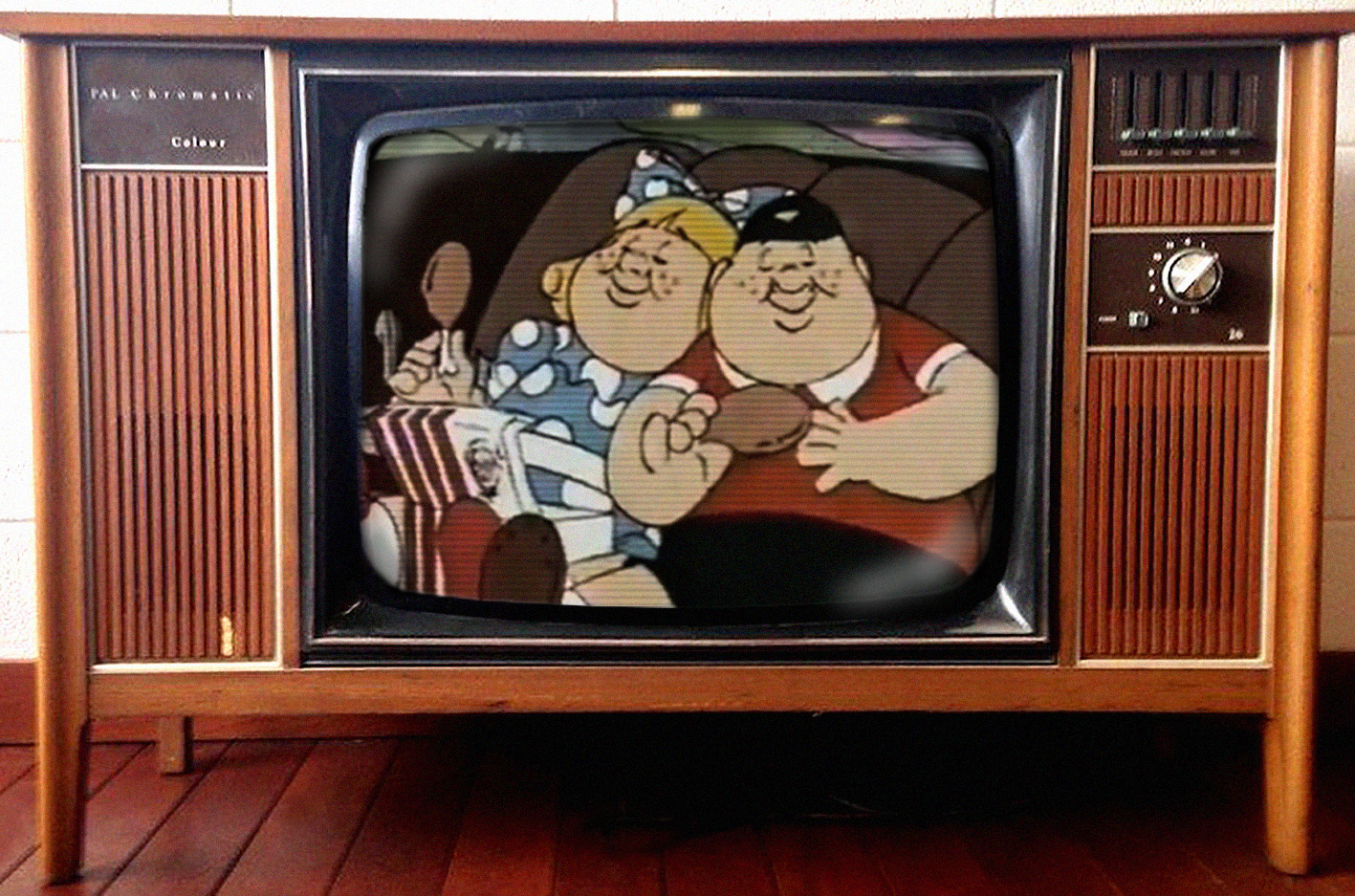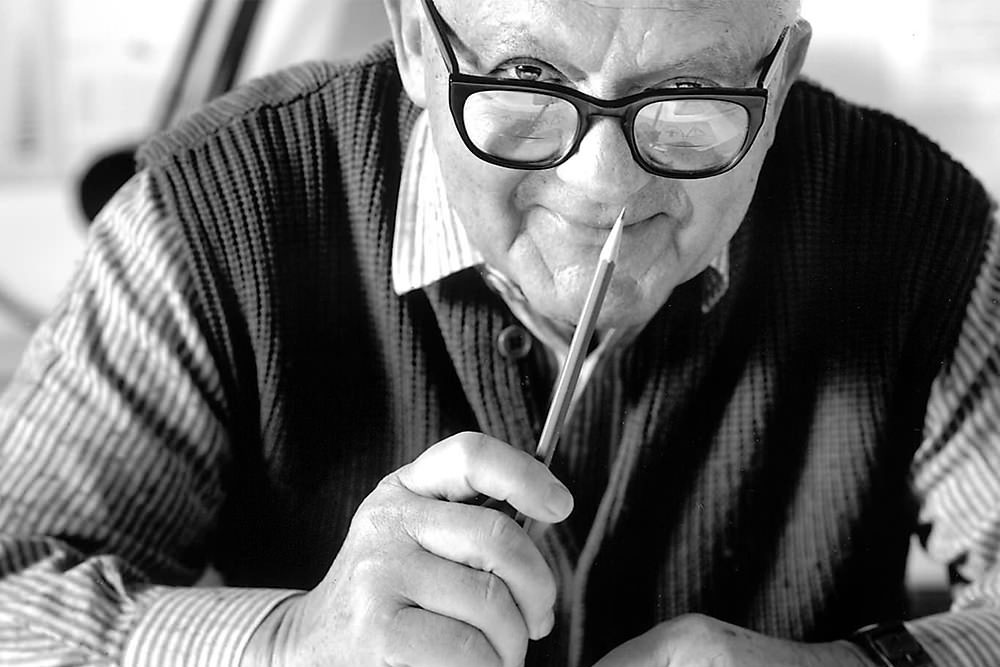The role of Design in Branding today
May 11, 2021
 Source: Broadsheet | As KFC Turns 50 in Australia, a Look Back at An Early Opening | Photography: KFC Archive
Source: Broadsheet | As KFC Turns 50 in Australia, a Look Back at An Early Opening | Photography: KFC Archive
Tony Osborne, Consulting Art Director at Kommnual –
“I’ve got a logo… what more do you want?”
I was about 8 or 9 when Kentucky Fried Chicken (now rebranded as KFC) opened in Sydney.
As a treat, Dad packed us all in the car and drove the 45min. journey so we could see and taste what the fuss was about. I remember the white stand-alone square building with a roof rising like a tent in bold red and white stripes, topped with a weather vane of the Colonel himself, spinning in the breeze. Inside the staff wore crisp white shirts and a paper US Air Force style cap in red and white.
 Classic KFC commercial from the 70’s | Youtube
Classic KFC commercial from the 70’s | Youtube
The chicken came in red & white striped boxes, (cardboard) buckets and barrels. Everywhere you looked had the smiling illustration of Colonel Sanders with the words “It’s finger lickin’ good” next to him in black, along with the name in a friendly, almost handwritten, bold typestyle. On the posters, napkins, menu board… even these new refresher towel sachet thingies! It was all like Disneyland had come to Australia.
Being a little kid, all I cared about was how new and different it all was. But what I was experiencing was my first exposure to visually led corporate branding on a grand scale.
They were using their corporate design elements in every possible public exposure. Most of them are still used today, over 50 years later.
Design and Branding are inextricably linked. And it’s much more than simply a logo.
The great American art director, Paul Rand said
“Design is the silent ambassador of your brand.”
 Great American graphic designer, Paul Rand | Famous Graphic Designers
Great American graphic designer, Paul Rand | Famous Graphic Designers
Use every tool in your arsenal to build awareness with your market; and that awareness comes from consistency.
That consistency has always been difficult to maintain. The variety of mediums and outside influencers have required clear, strong leadership and belief to maintain. But with today’s online world, it can be like herding cats.
‘Real’ media (TV, radio, print, outdoor, collateral, etc.) is still relevant, with greater accessibility than ever. Then there’s the virtual media proliferation. But by far, the most dangerous offender is the new “Arm Chair Designer”.
Anyone can buy a Mac; look at a few YouTube videos; access the Adobe Creative Suite; and instantly they’re a “Designer”. You don’t even have to go that far… how many companies use internal notices, “created” by the junior employee using Microsoft Word fonts and icons, printed out on A4 paper, laminated and stuck up on the kitchen wall or next to the elevator?
Now, there is even access to platforms like Canva. Sign up and get literally thousands of templates at your fingertips. But as Jon-Stephen Stansel says in his blog
“Canva makes you a graphic designer the same way a microwave makes you a chef.”
The thing that’s missing in those thousands of templates is… you. It’s what makes your business or service different, so shouldn’t that be reflected in how you communicate?
I was asked if Steve Jobs would use Canva. Well, though not ever meeting Steve, I would still guess that he definitely wouldn’t.
That got me thinking about the other iconic brands that are constantly flaunted as brands to aim for: McDonald’s, Coca-Cola, Ford, even Twitter or Instagram? Would they use a Canva logo template? Remember, they all started small too, and created logos that reflected what they were. Which grew and evolved as their business did.
Taking the time to create your brand identity, using rigorous thinking and quality talent, will pay off when it is used consistently and with discipline. As Paul Rand also said…
“Everything is design. Everything.”
Here are links to some interesting views and ideas on design in branding:
15 Creativity killers and how to eradicate them – Just Creative
A brief history of branding – 99 Designs
The Case Against Canva – Jon-Stephen Stansel
Now that you’ve read the impact of design and branding in today’s world, read on to see how sweating the ‘little things’ can make a huge difference to your brand’s character. Read the next blog

Tony Osborne, Consulting Art Director at Kommnual –
“I’ve got a logo… what more do you want?”
I was about 8 or 9 when Kentucky Fried Chicken (now rebranded as KFC) opened in Sydney.
As a treat, Dad packed us all in the car and drove the 45min. journey so we could see and taste what the fuss was about. I remember the white stand-alone square building with a roof rising like a tent in bold red and white stripes, topped with a weather vane of the Colonel himself, spinning in the breeze. Inside the staff wore crisp white shirts and a paper US Air Force style cap in red and white.
 Classic KFC commercial from the 70’s | Youtube
Classic KFC commercial from the 70’s | Youtube
The chicken came in red & white striped boxes, (cardboard) buckets and barrels. Everywhere you looked had the smiling illustration of Colonel Sanders with the words “It’s finger lickin’ good” next to him in black, along with the name in a friendly, almost handwritten, bold typestyle. On the posters, napkins, menu board… even these new refresher towel sachet thingies! It was all like Disneyland had come to Australia.
Being a little kid, all I cared about was how new and different it all was. But what I was experiencing was my first exposure to visually led corporate branding on a grand scale.
They were using their corporate design elements in every possible public exposure. Most of them are still used today, over 50 years later.
Design and Branding are inextricably linked. And it’s much more than simply a logo.
The great American art director, Paul Rand said
“Design is the silent ambassador of your brand.”
 Great American graphic designer, Paul Rand | Famous Graphic Designers
Great American graphic designer, Paul Rand | Famous Graphic Designers
Use every tool in your arsenal to build awareness with your market; and that awareness comes from consistency.
That consistency has always been difficult to maintain. The variety of mediums and outside influencers have required clear, strong leadership and belief to maintain. But with today’s online world, it can be like herding cats.
‘Real’ media (TV, radio, print, outdoor, collateral, etc.) is still relevant, with greater accessibility than ever. Then there’s the virtual media proliferation. But by far, the most dangerous offender is the new “Arm Chair Designer”.
Anyone can buy a Mac; look at a few YouTube videos; access the Adobe Creative Suite; and instantly they’re a “Designer”. You don’t even have to go that far… how many companies use internal notices, “created” by the junior employee using Microsoft Word fonts and icons, printed out on A4 paper, laminated and stuck up on the kitchen wall or next to the elevator?
Now, there is even access to platforms like Canva. Sign up and get literally thousands of templates at your fingertips. But as Jon-Stephen Stansel says in his blog
“Canva makes you a graphic designer the same way a microwave makes you a chef.”
The thing that’s missing in those thousands of templates is… you. It’s what makes your business or service different, so shouldn’t that be reflected in how you communicate?
I was asked if Steve Jobs would use Canva. Well, though not ever meeting Steve, I would still guess that he definitely wouldn’t.
That got me thinking about the other iconic brands that are constantly flaunted as brands to aim for: McDonald’s, Coca-Cola, Ford, even Twitter or Instagram? Would they use a Canva logo template? Remember, they all started small too, and created logos that reflected what they were. Which grew and evolved as their business did.
Taking the time to create your brand identity, using rigorous thinking and quality talent, will pay off when it is used consistently and with discipline. As Paul Rand also said…
“Everything is design. Everything.”
Here are links to some interesting views and ideas on design in branding:
15 Creativity killers and how to eradicate them – Just Creative
A brief history of branding – 99 Designs
The Case Against Canva – Jon-Stephen Stansel
Now that you’ve read the impact of design and branding in today’s world, read on to see how sweating the ‘little things’ can make a huge difference to your brand’s character. Read the next blog
